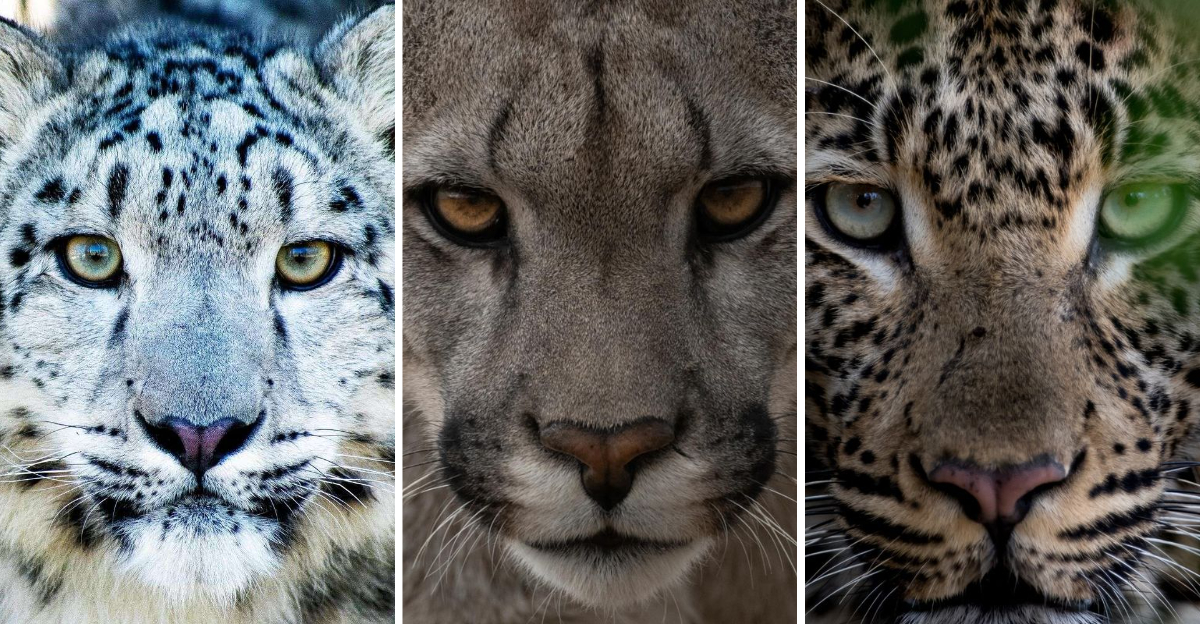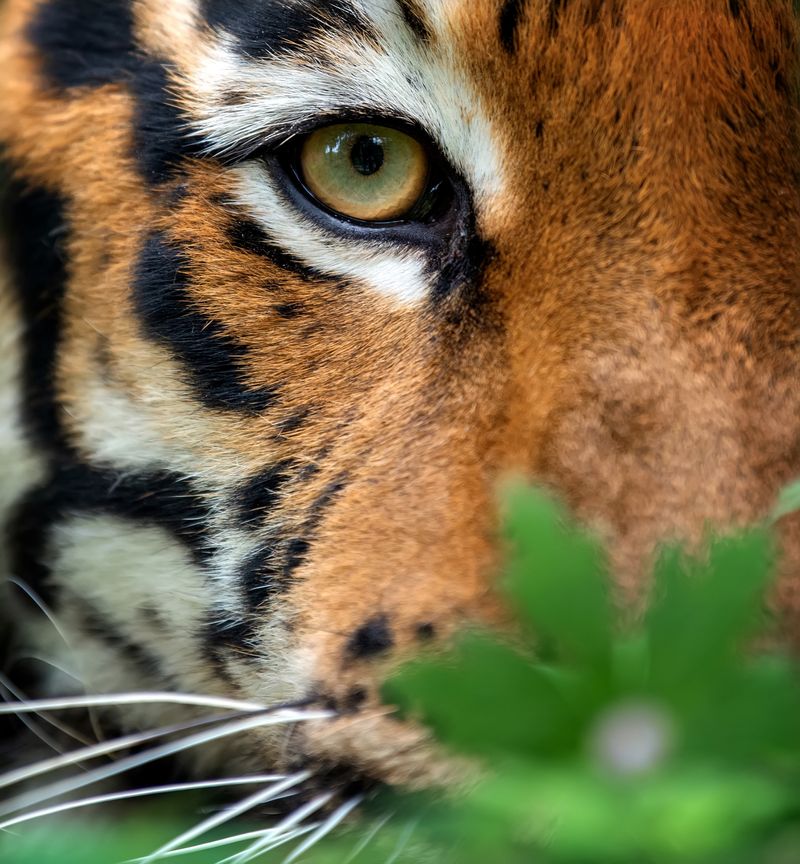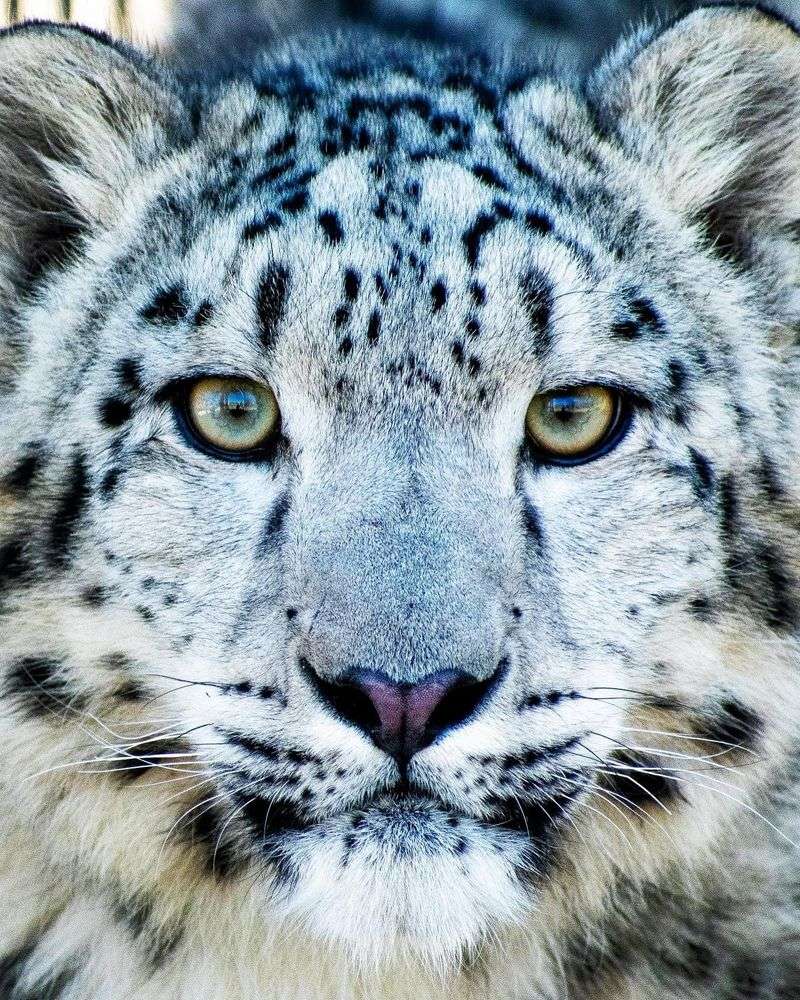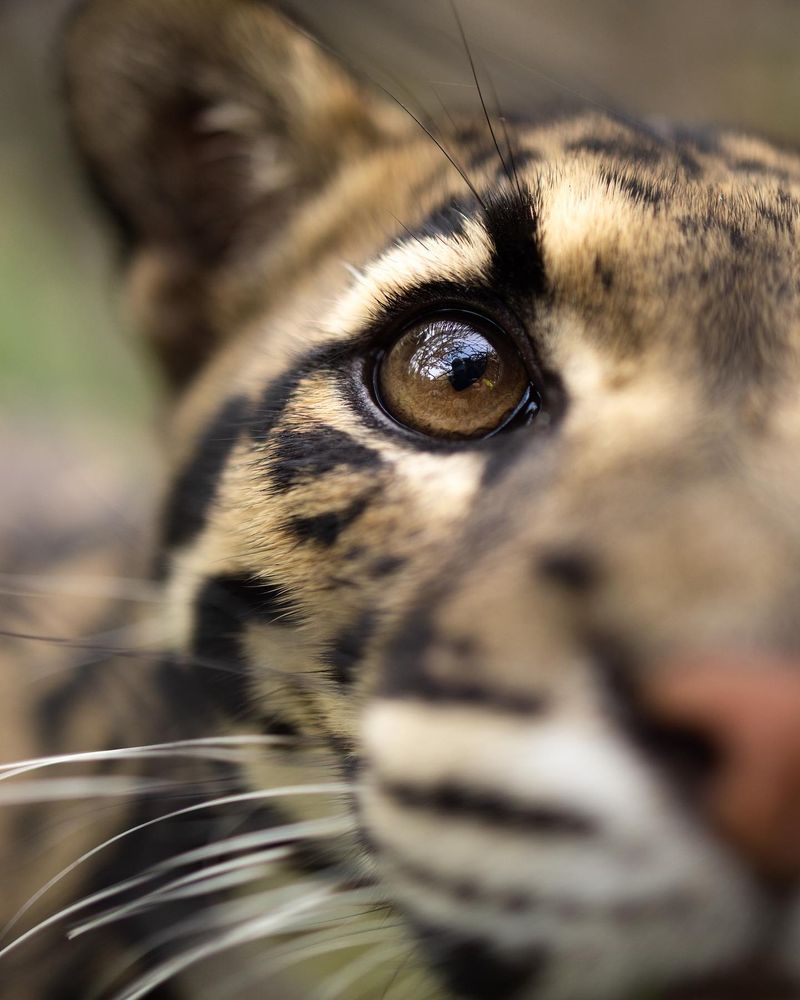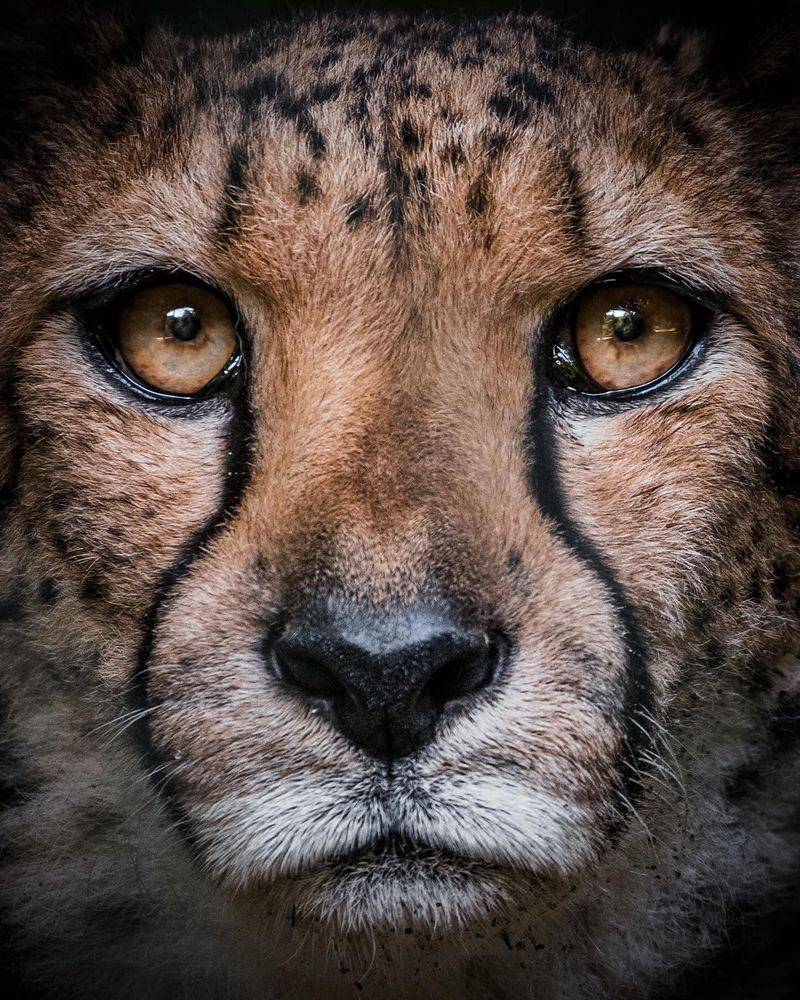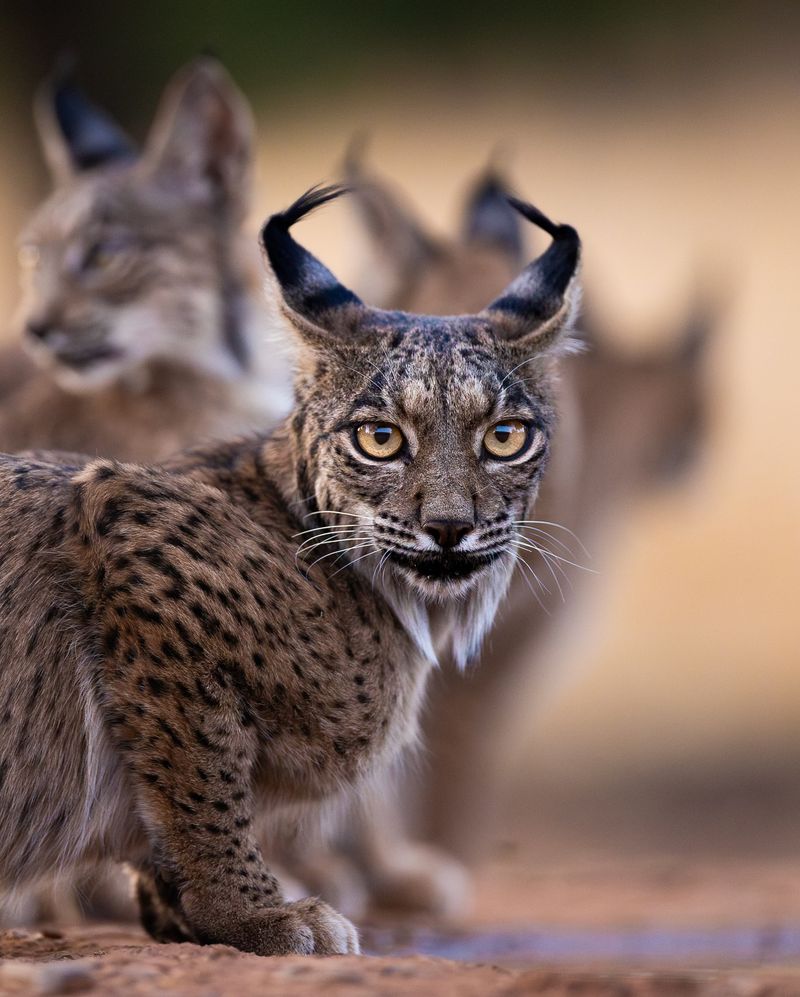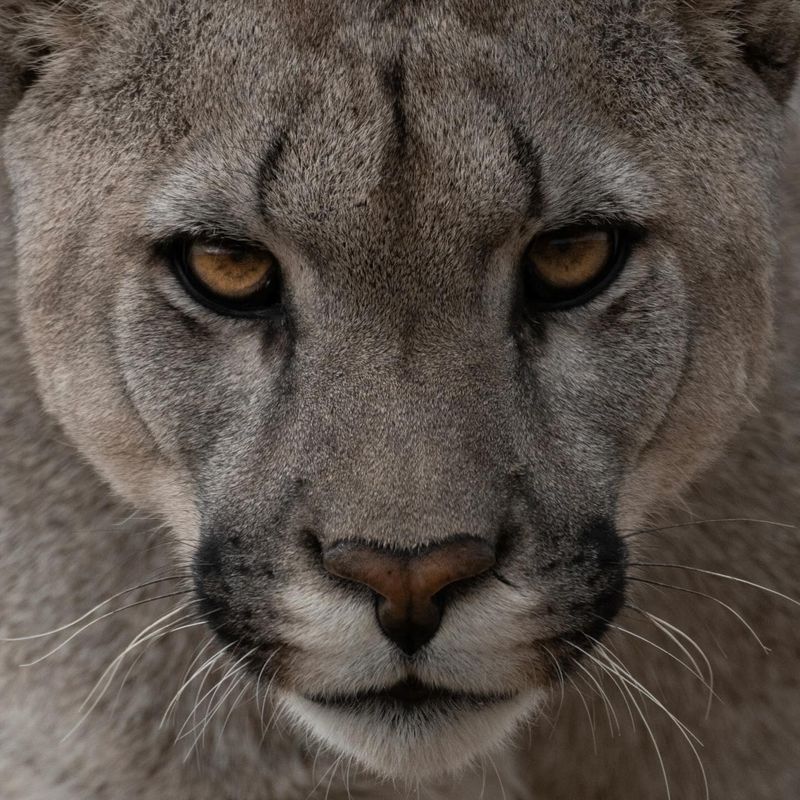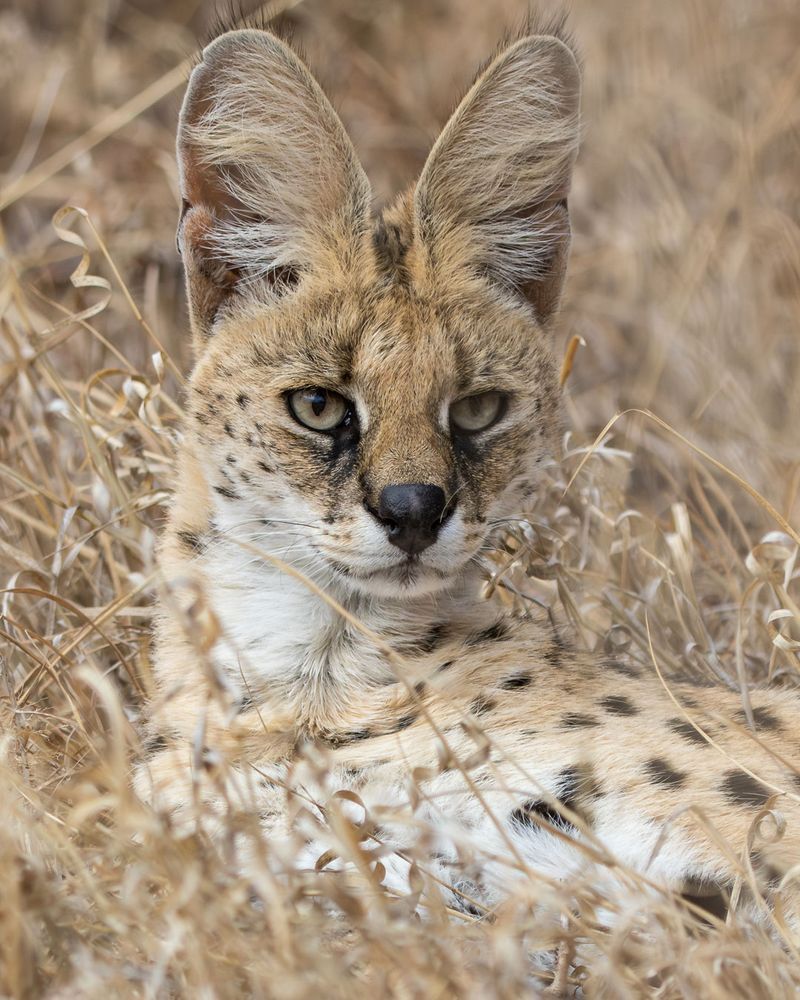📖 Table of Content:
- 1. Tiger’s Amber Spotlight
- 2. Snow Leopard’s Crystalline Gaze
- 3. Jaguar’s Gold-Flecked Windows
- 4. Clouded Leopard’s Twilight Vision
- 5. Cheetah’s Tear-Marked Intensity
- 6. Lynx’s Luminous Lanterns
- 7. Puma’s Copper Coin Stare
- 8. Ocelot’s Midnight Marbles
- 9. Serval’s Sunset Orbs
- 10. Caracal’s Desert Jewels
They stare through the underbrush, glowing like twin embers in the night. In the jungles, mountains, deserts, and forests of the world, wild cats command attention not just with their stealth or strength, but with their eyes. Hypnotic. Haunting. Almost otherworldly. One look, and you feel it: the chilling thrill of locking gazes with nature’s most elite predators.
Honed over millions of years of evolution, these eyes have adapted to diverse and unforgiving habitats, from blinding snowfields to pitch-black rainforests. Each iris tells a story of hunting, hiding, and thriving in a world where the difference between feast and famine often comes down to what a cat can see… and how fast it can react.
In this visual journey, we explore ten of the most mesmerizing feline gazes in the wild—from the soul-piercing pupils of a caracal to the ghostly shimmer of an ocelot’s nocturnal vision. You’ll learn how each species has evolved distinct ocular superpowers that allow them to hunt in extreme conditions, track prey with uncanny accuracy, and thrive in some of the most dangerous places on Earth.
So, prepare to look closer. The eyes of these magnificent cats don’t just reflect the light. They reflect the essence of the wild itself—mysterious, lethal, and endlessly fascinating.
1. Tiger’s Amber Spotlight
Tigers feature round pupils surrounded by striking amber-orange irises that seem to glow with inner fire. Unlike domestic cats, their eyes lack the extreme vertical slit, instead maintaining a more circular shape that enhances daylight hunting precision.
What makes tiger eyes truly remarkable is their reflective layer called the tapetum lucidum, which bounces light back through the retina for superior night vision. This adaptation gives tigers 6 times better night vision than humans.
When photographed in low light, tiger eyes appear to burn with an otherworldly luminescence, creating that unmistakable predatory stare that freezes prey in their tracks and reminds us why these magnificent cats command such respect in every culture they inhabit.
2. Snow Leopard’s Crystalline Gaze
Nestled among the world’s highest mountains, snow leopards possess pale green or gray eyes that blend perfectly with their misty habitat. Their pupils expand enormously in low light, allowing them to hunt effectively during dawn and dusk when prey is most active.
The iris contains unique patterns as individual as human fingerprints. Snow leopards have evolved specialized corneas that filter harsh mountain sunlight reflecting off snow, preventing snow blindness while maintaining crystal-clear vision.
Most fascinating is how their eyes can spot camouflaged prey against rocky landscapes from nearly a kilometer away. This remarkable visual acuity, combined with their ghostly appearance, earned them the nickname ‘mountain phantoms’ among local communities throughout the Himalayas.
3. Jaguar’s Gold-Flecked Windows
Jaguars possess extraordinary golden eyes with honey-brown flecks that seem to capture the dappled sunlight of their rainforest homes. Their pupils contract to perfect circles in bright light but expand dramatically at night, transforming into near-perfect light gatherers.
Unlike other big cats, jaguar eyes contain a higher concentration of rod cells, light-sensitive receptors that enhance movement detection even in dense jungle shadows. This adaptation makes them lethal hunters in the complex visual environment of tropical forests.
Local indigenous cultures across Central and South America often describe jaguar eyes as gateways to the spirit world. Looking at their mesmerizing gaze, with gold that seems to shimmer like sunlight on water, it’s easy to understand why these magnificent eyes have inspired such profound spiritual reverence.
4. Clouded Leopard’s Twilight Vision
Clouded leopards boast grayish-green to pale yellow eyes that appear almost translucent in certain light. Their pupils can dilate to extraordinary sizes, covering nearly the entire visible eye surface when fully expanded in darkness.
Scientists have discovered that clouded leopard eyes contain nearly double the concentration of light-sensitive cells compared to other wild cats of their size. This remarkable adaptation allows them to detect movement in light levels 300 times dimmer than what humans require.
Found throughout the cloud forests of Southeast Asia, these medium-sized cats use their exceptional night vision to navigate dense canopies during nocturnal hunts. Their eyes reflect an eerie emerald glow when caught in light, creating ghostly twin beacons that have spawned countless folklore tales throughout their range.
5. Cheetah’s Tear-Marked Intensity
Cheetahs feature distinctive amber eyes with black tear marks running from eye corners to mouth. These marks serve a practical purpose – reducing glare during daytime hunts much like an athlete’s eye black, helping them maintain focus on fast-moving prey.
Unlike most cats, cheetahs hunt primarily during daylight, so their eyes have evolved with more cone cells for superior color discrimination and distance judgment. Their fixed gaze while stalking prey demonstrates remarkable concentration, with pupils contracting to tiny dots for maximum visual clarity.
The horizontal black tear marks also help cheetahs recognize each other at a distance across open savannas. When photographed in perfect light, their eyes reveal an intensity that perfectly matches their reputation as nature’s most perfectly designed sprinting predator.
6. Lynx’s Luminous Lanterns
Lynx eyes stand out with their striking golden-yellow color that appears to glow like lanterns in the northern forests they inhabit. Their eyes are proportionally larger than most wild cats relative to skull size, maximizing light gathering in the dim boreal forests.
What makes lynx vision truly exceptional is their ability to detect the slight movement of a snowshoe hare at 250 feet away. Their pupils expand dramatically in dim light, with specialized cells that can detect the ultraviolet light reflected off fresh urine trails of prey animals in snow.
Indigenous peoples across the northern hemisphere have long considered lynx eyes magical, believing they could see into other realms. When photographed in winter twilight, their eyes create an almost supernatural appearance against their frost-rimmed facial tufts.
7. Puma’s Copper Coin Stare
Pumas (also known as mountain lions or cougars) possess distinctive copper-penny colored eyes that shine with remarkable intensity. Unlike the vertical slits of smaller cats, their pupils remain more rounded, providing balanced vision across varying light conditions from dusky canyons to bright mountainsides.
The copper coloration comes from specialized pigments that enhance contrast sensitivity, allowing pumas to detect the subtle movements of prey against complex backgrounds. Their eyes contain a high concentration of rod cells arranged in a unique pattern that maximizes peripheral vision.
Pumas can process visual information three times faster than humans, perceiving movements that would appear as a blur to our eyes. When a puma locks its copper gaze on you, you’re experiencing the calculating stare of North America’s most adaptable and widespread wild cat.
8. Ocelot’s Midnight Marbles
Ocelots possess enormous eyes relative to their head size, appearing like polished midnight marbles with a golden-green glow. Their massive pupils can expand to cover almost the entire visible eye, allowing them to hunt effectively in the darkest tropical nights.
Scientists have discovered that ocelot eyes contain a specialized tapetum lucidum (reflective layer) with a unique crystalline structure that amplifies available light up to 44% more efficiently than domestic cats. This adaptation creates their distinctive eyeshine, which appears almost supernaturally bright when caught in light.
Found throughout Latin American rainforests, ocelots rely on these remarkable eyes to navigate dense vegetation in near-total darkness. Their visual acuity is so precise that they can spot tiny movements of sleeping birds among foliage, making them masterful nocturnal hunters.
9. Serval’s Sunset Orbs
Servals possess amber eyes with orange undertones reminiscent of African sunsets, perfectly complementing their golden-spotted coats. Their eyes are positioned high on their elongated skull, providing excellent panoramic vision across the grasslands they patrol.
The most remarkable feature of serval eyes is their connection to the cat’s extraordinary ears. These cats have neural pathways that integrate visual and auditory information with unmatched precision, allowing them to pinpoint small prey hiding in tall grass.
Servals can detect movement up to 25% faster than domestic cats, giving them the reaction speed needed for their signature hunting leap. When photographed from the front, their forward-facing eyes create an almost owl-like appearance, hinting at the exceptional binocular vision that makes them Africa’s most successful small-prey hunters.
10. Caracal’s Desert Jewels
Caracals feature striking copper-red eyes that appear like polished gemstones against their sandy-colored fur. Their pupils form perfect vertical slits in bright desert sunlight but expand to almost perfect circles in darkness.
What makes caracal eyes truly special is their adaptation to extreme desert conditions. They possess extra eyelid membranes and specialized tear ducts that protect against blowing sand while maintaining crystal-clear vision, even during sandstorms that would blind most animals.
Desert peoples throughout North Africa and the Middle East have long associated caracal eyes with mystical properties. When photographed in perfect light, these eyes reveal an almost hypnotic quality, with depth and intensity that seems to capture the ancient spirit of the desert landscapes they inhabit.
